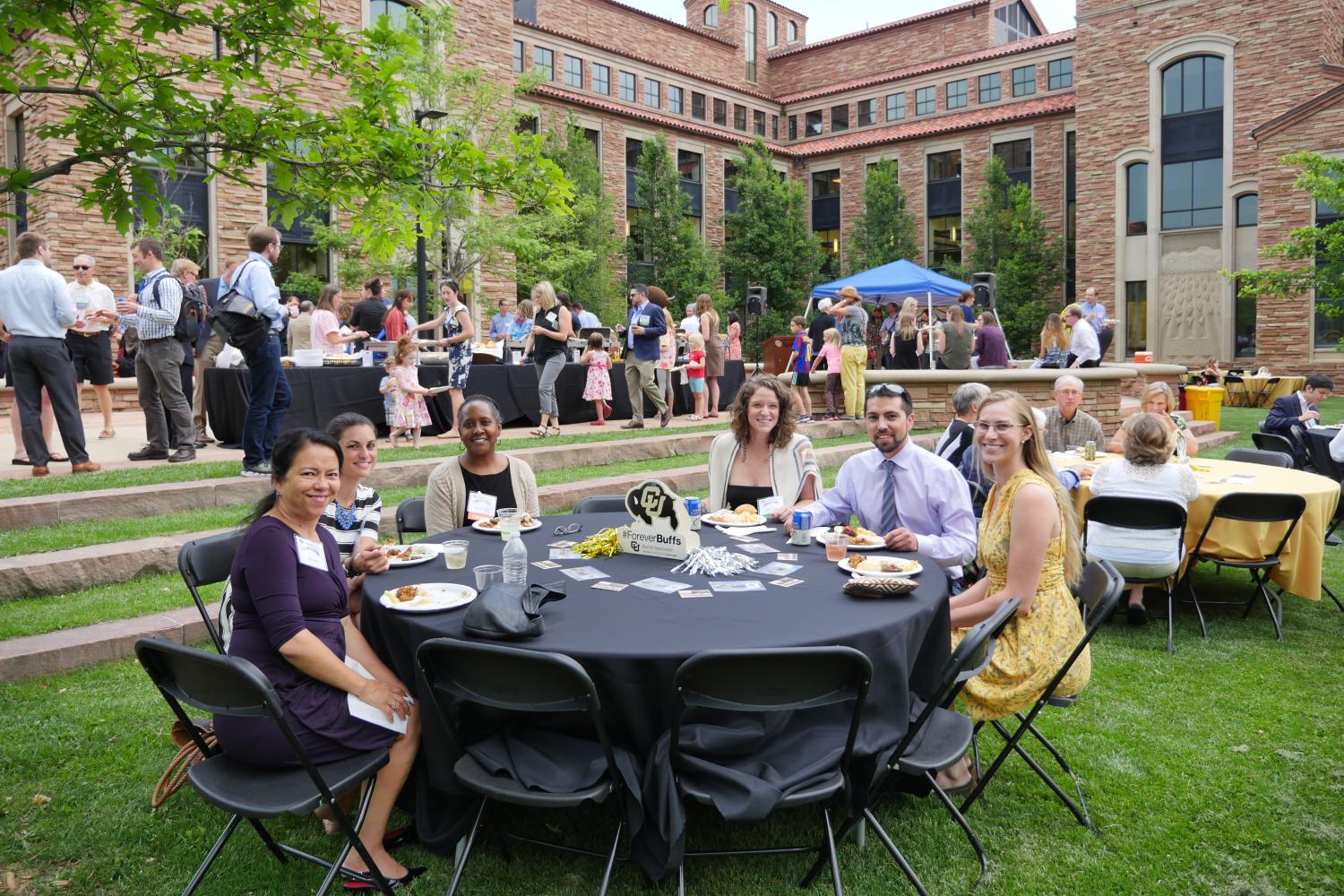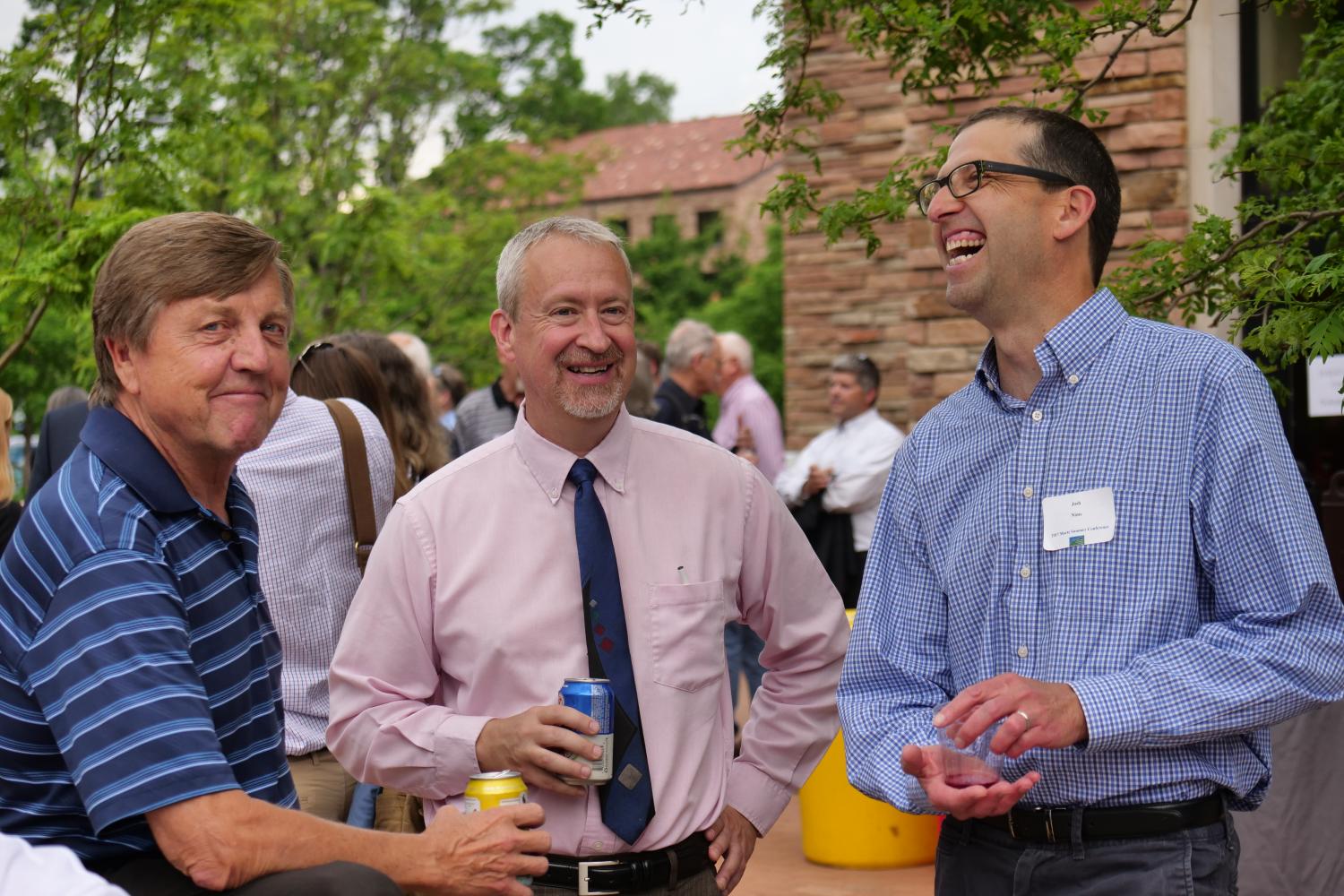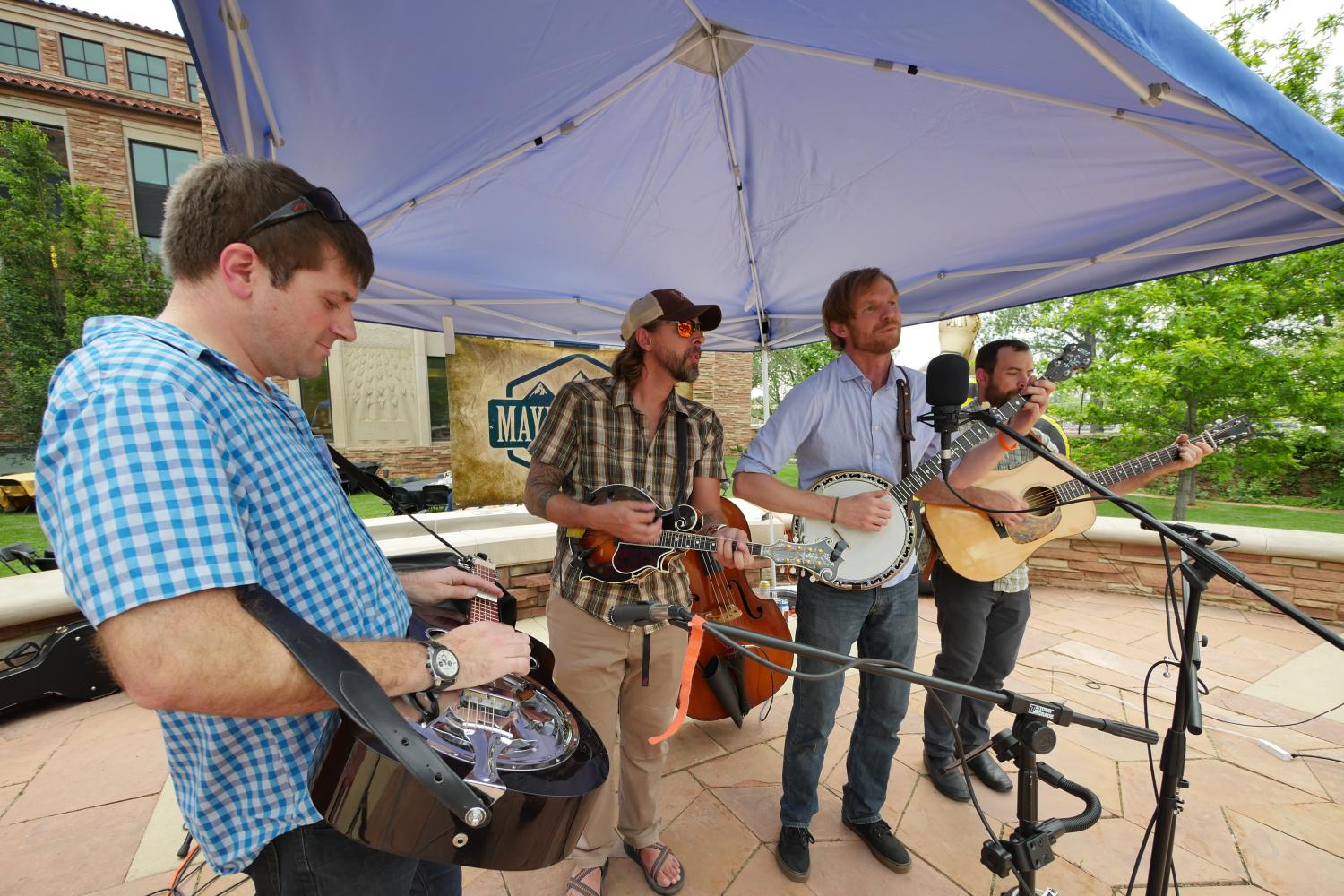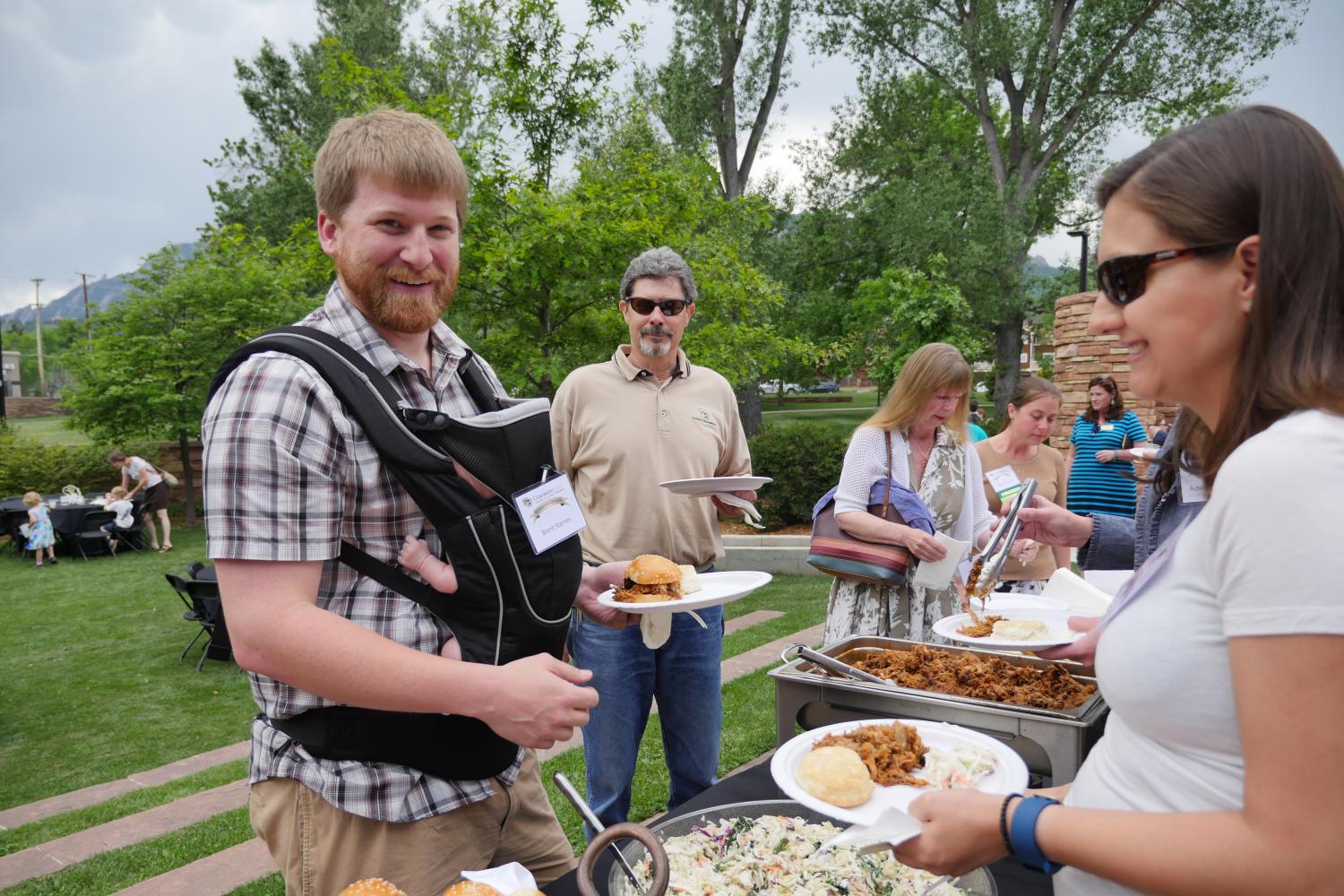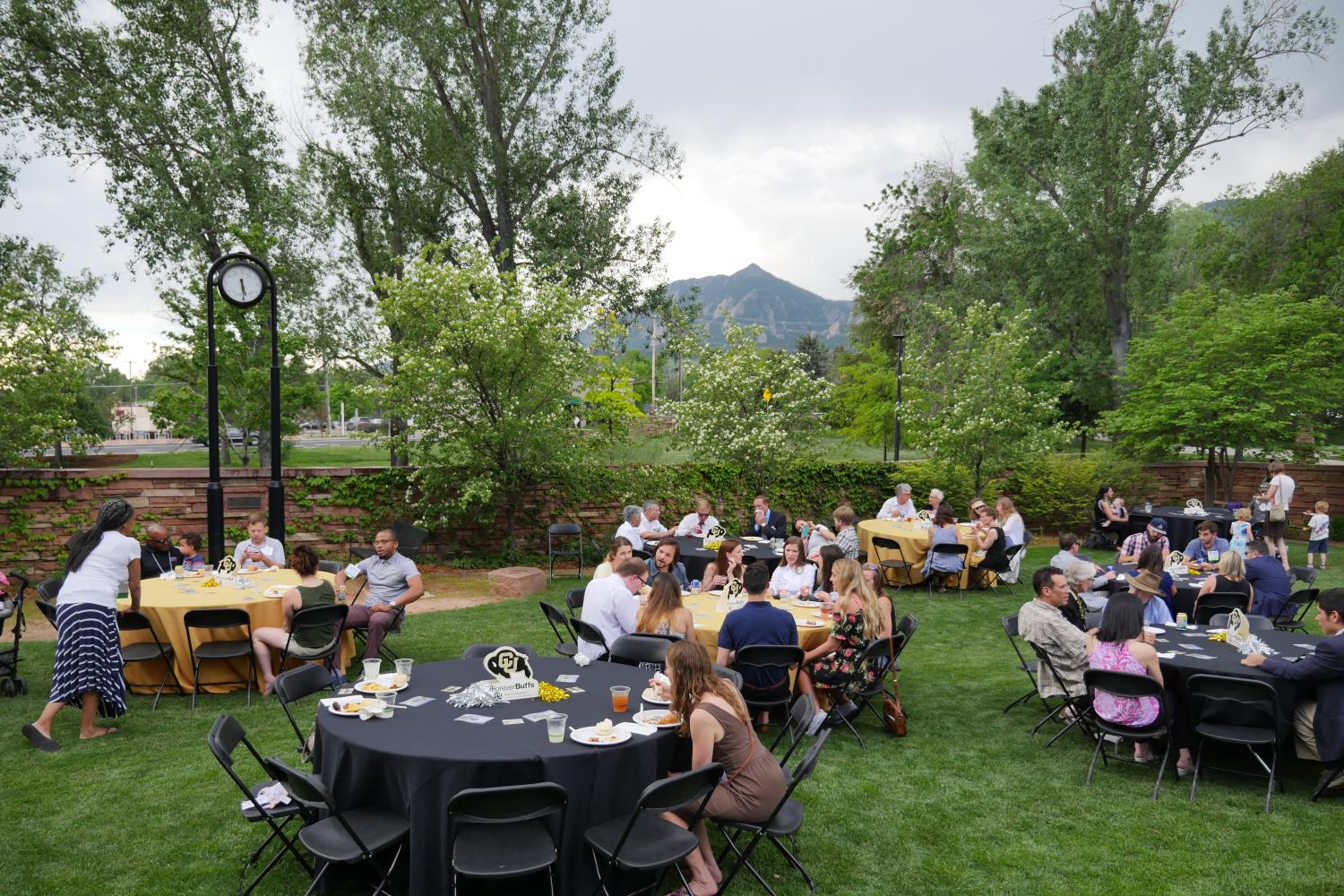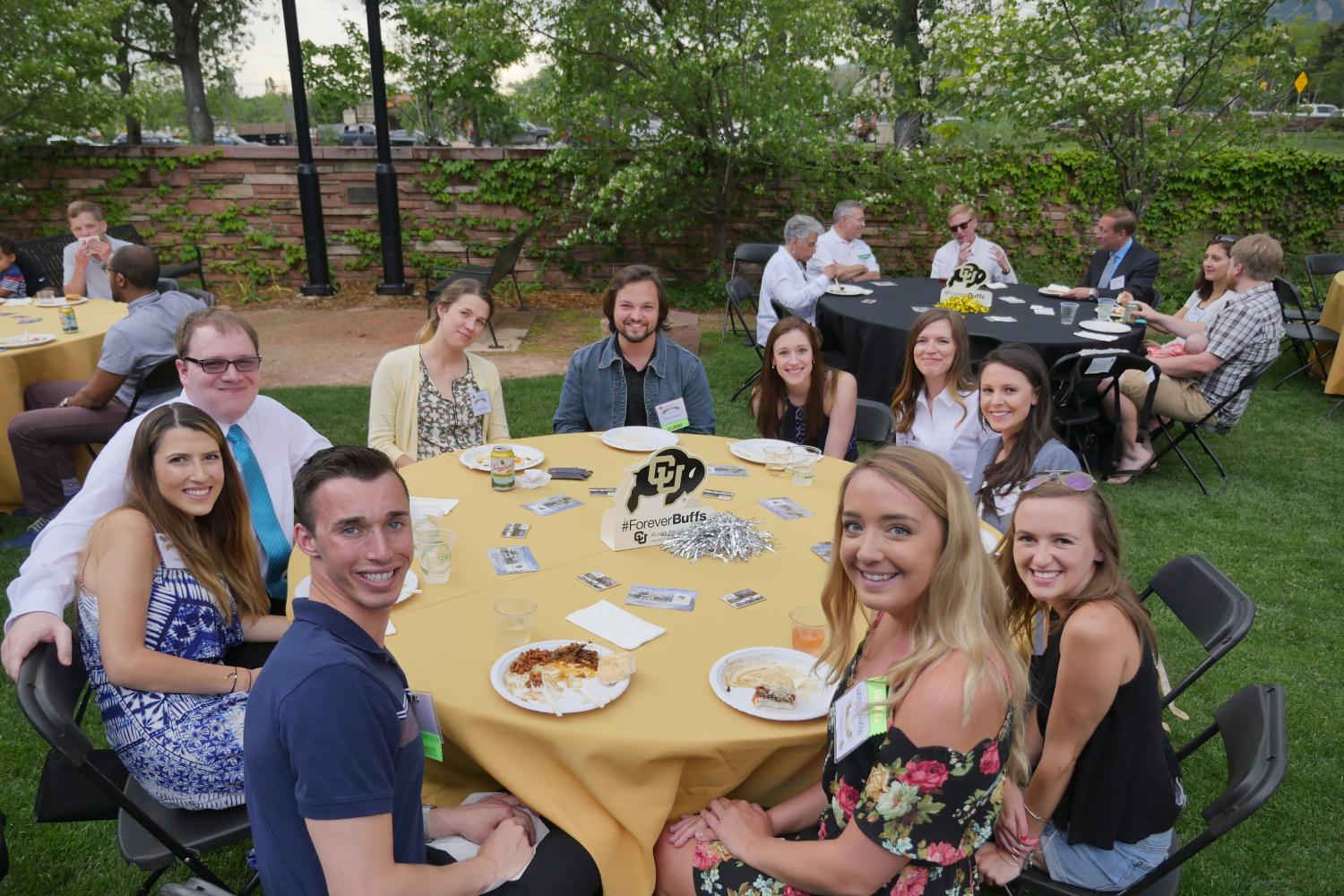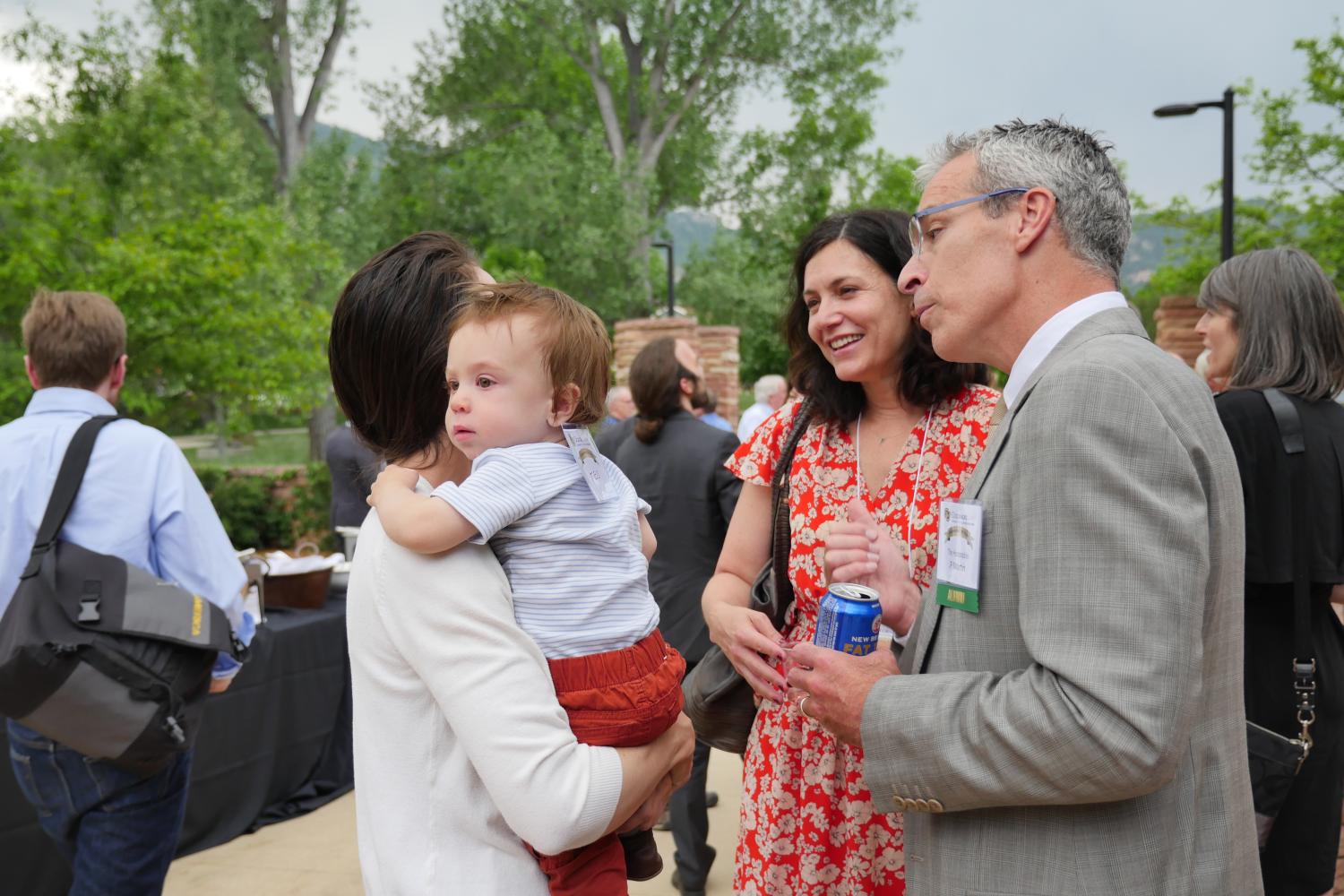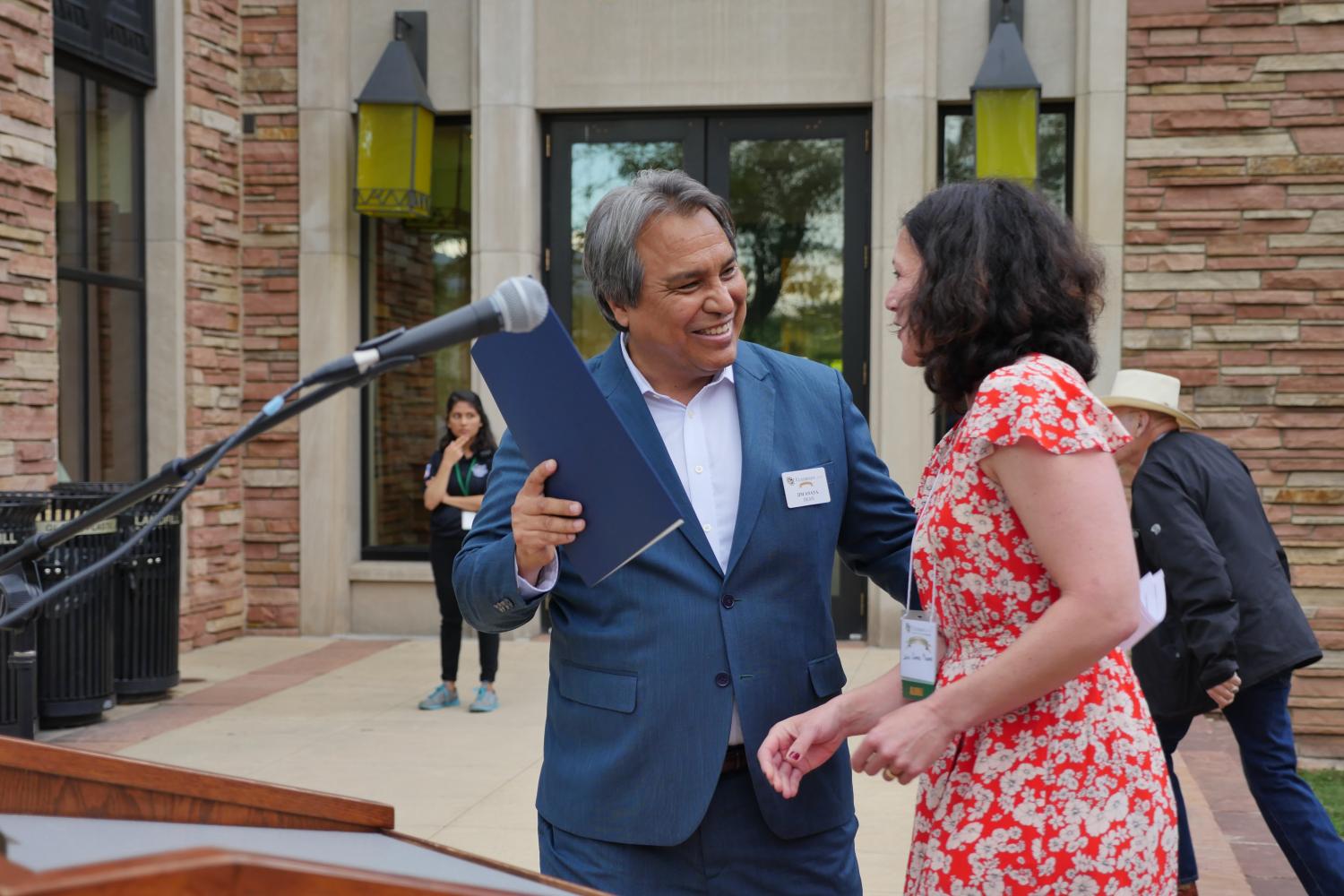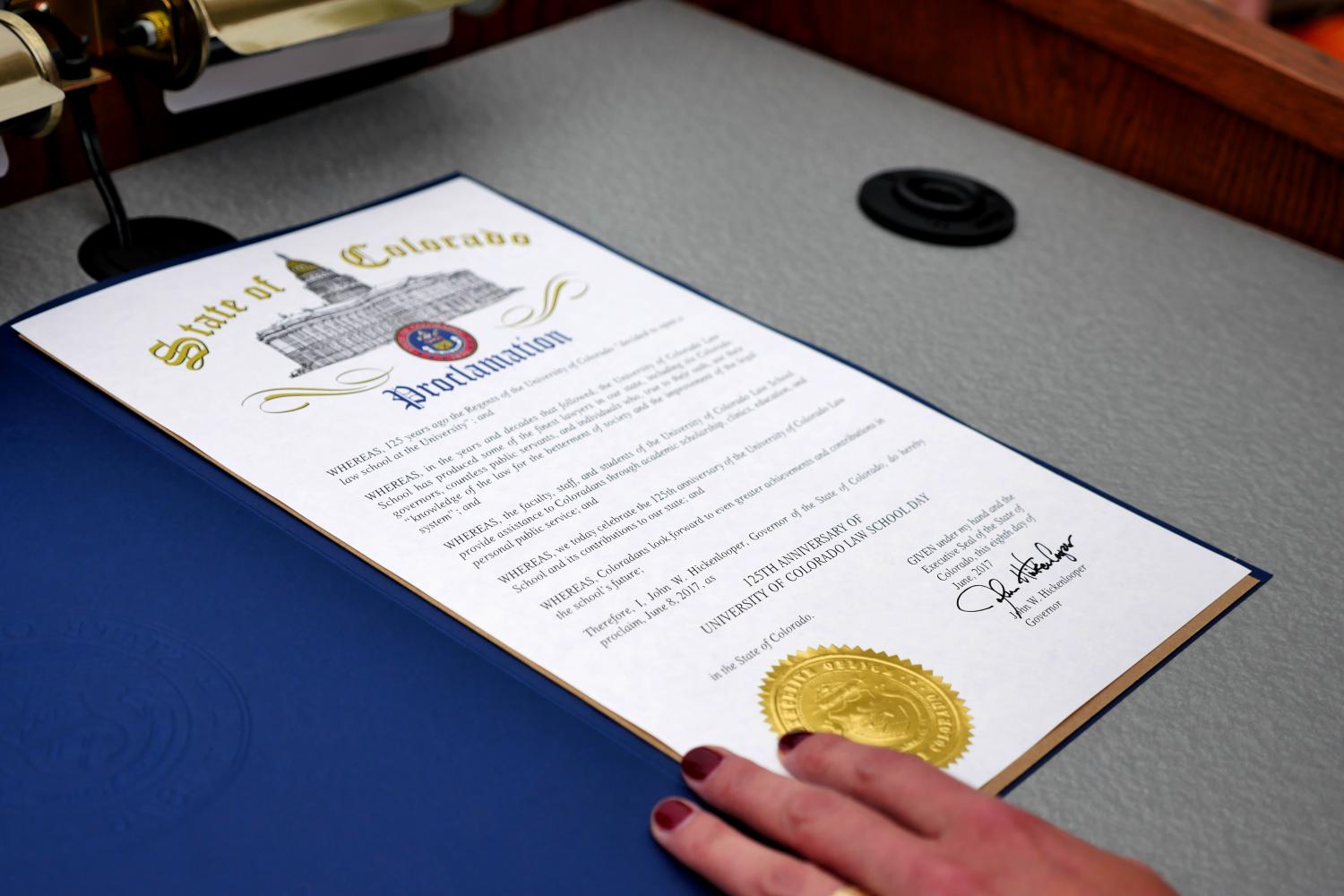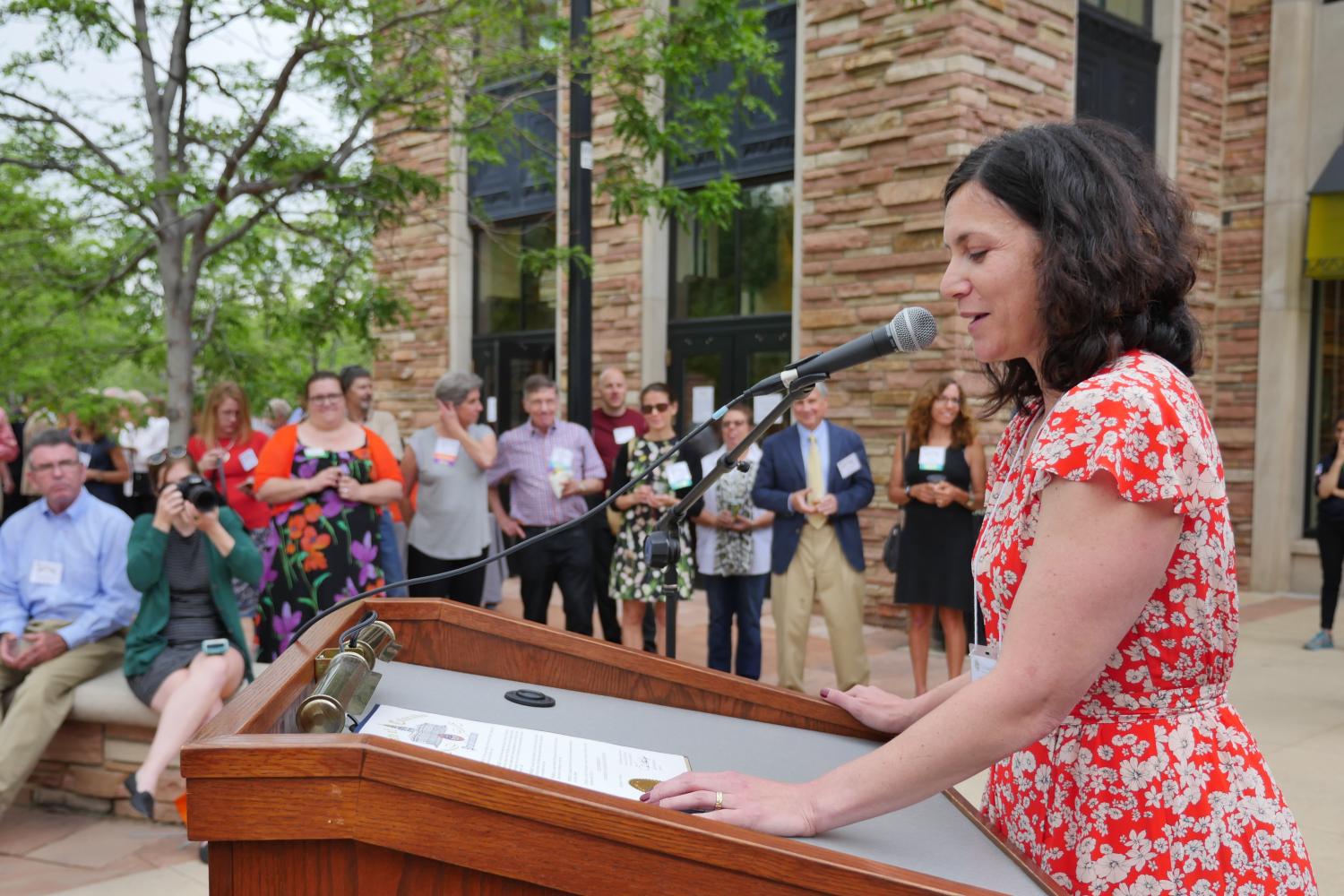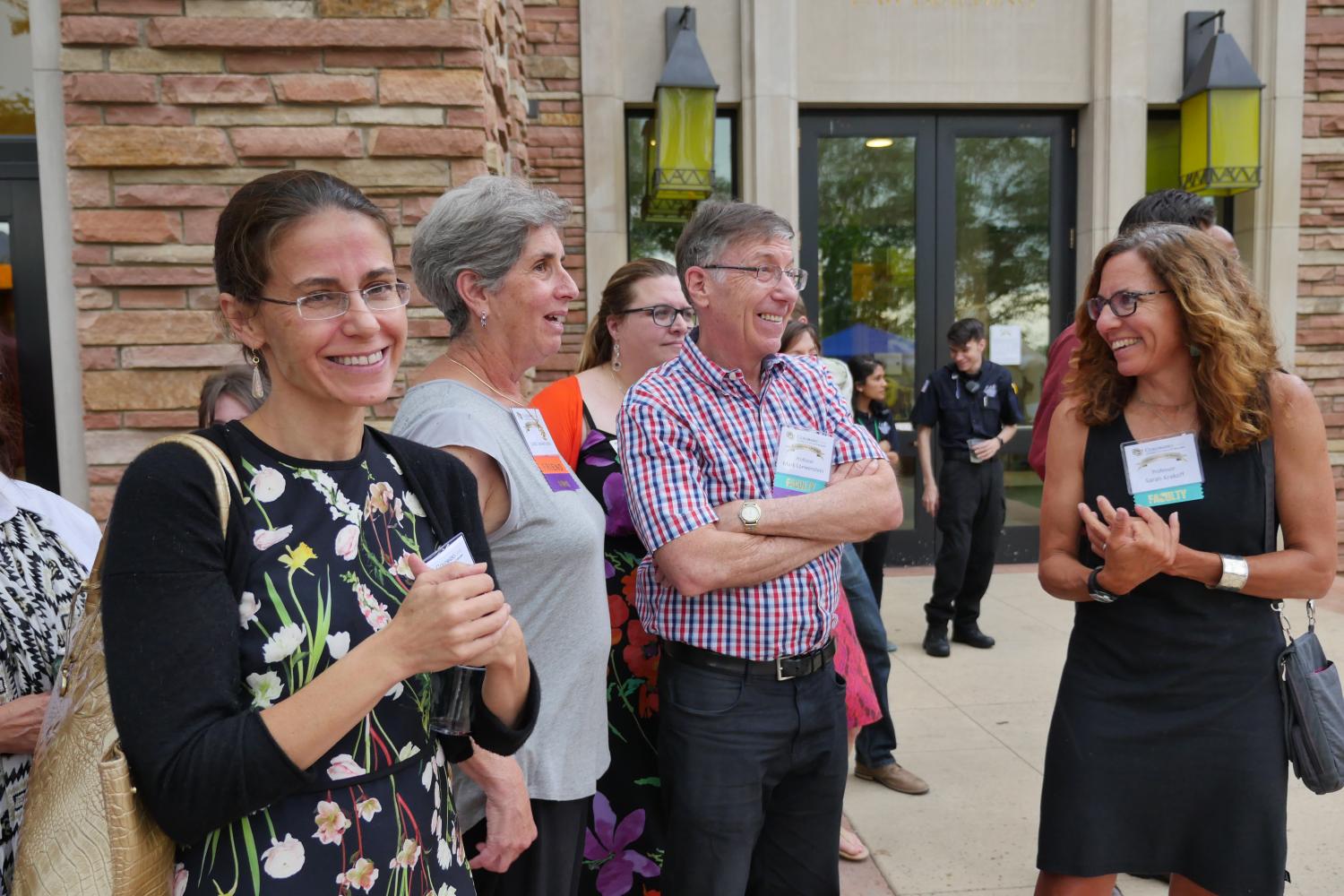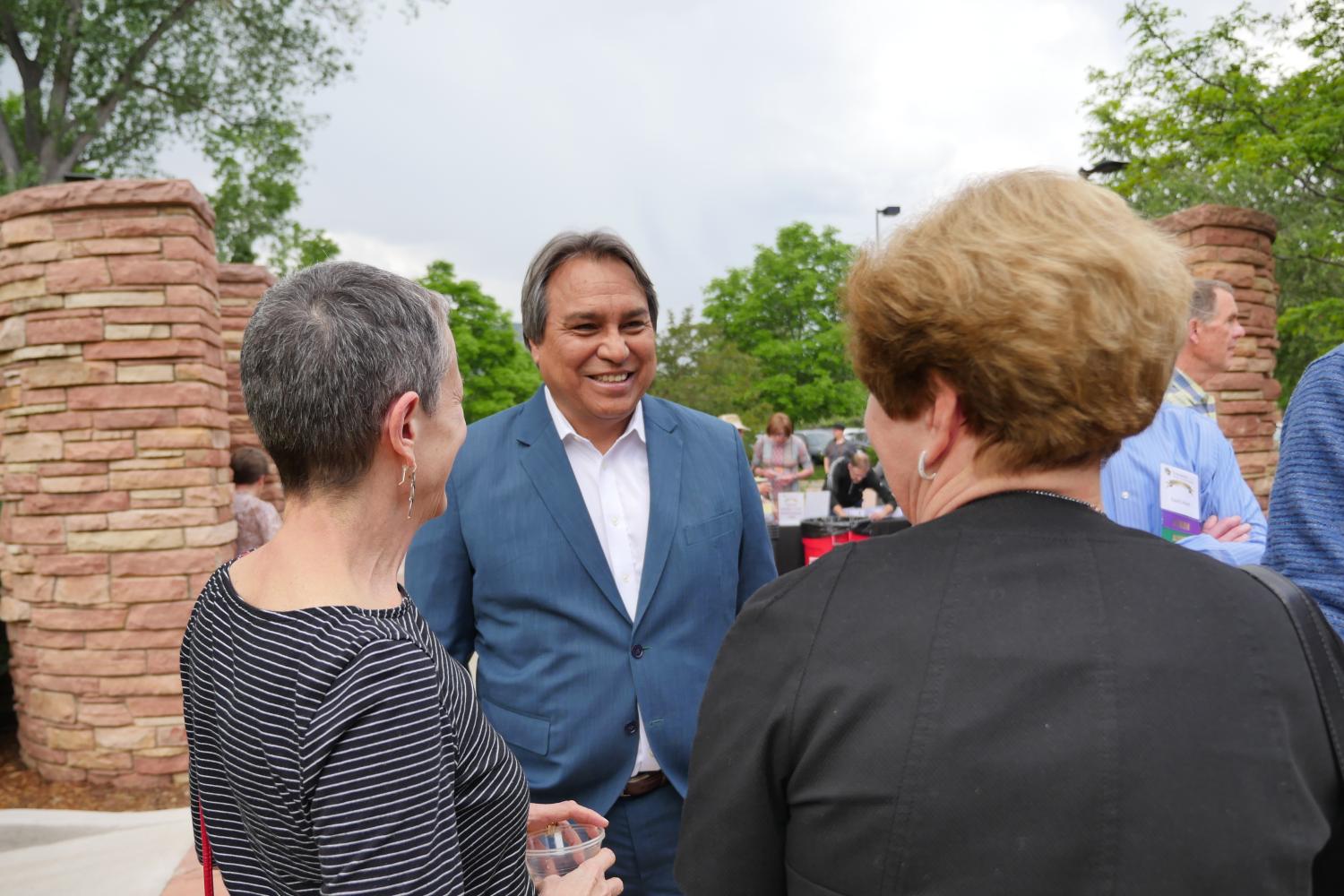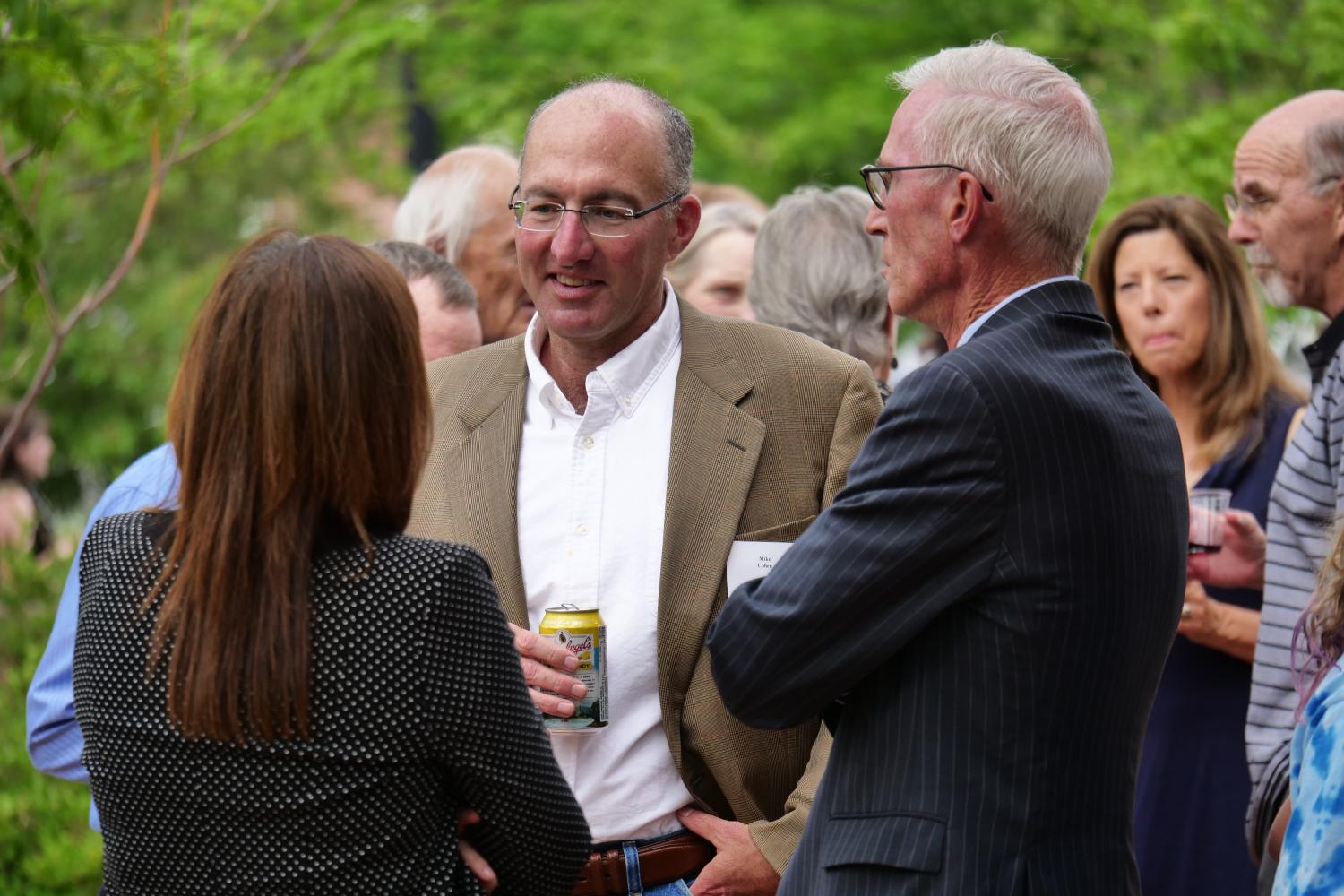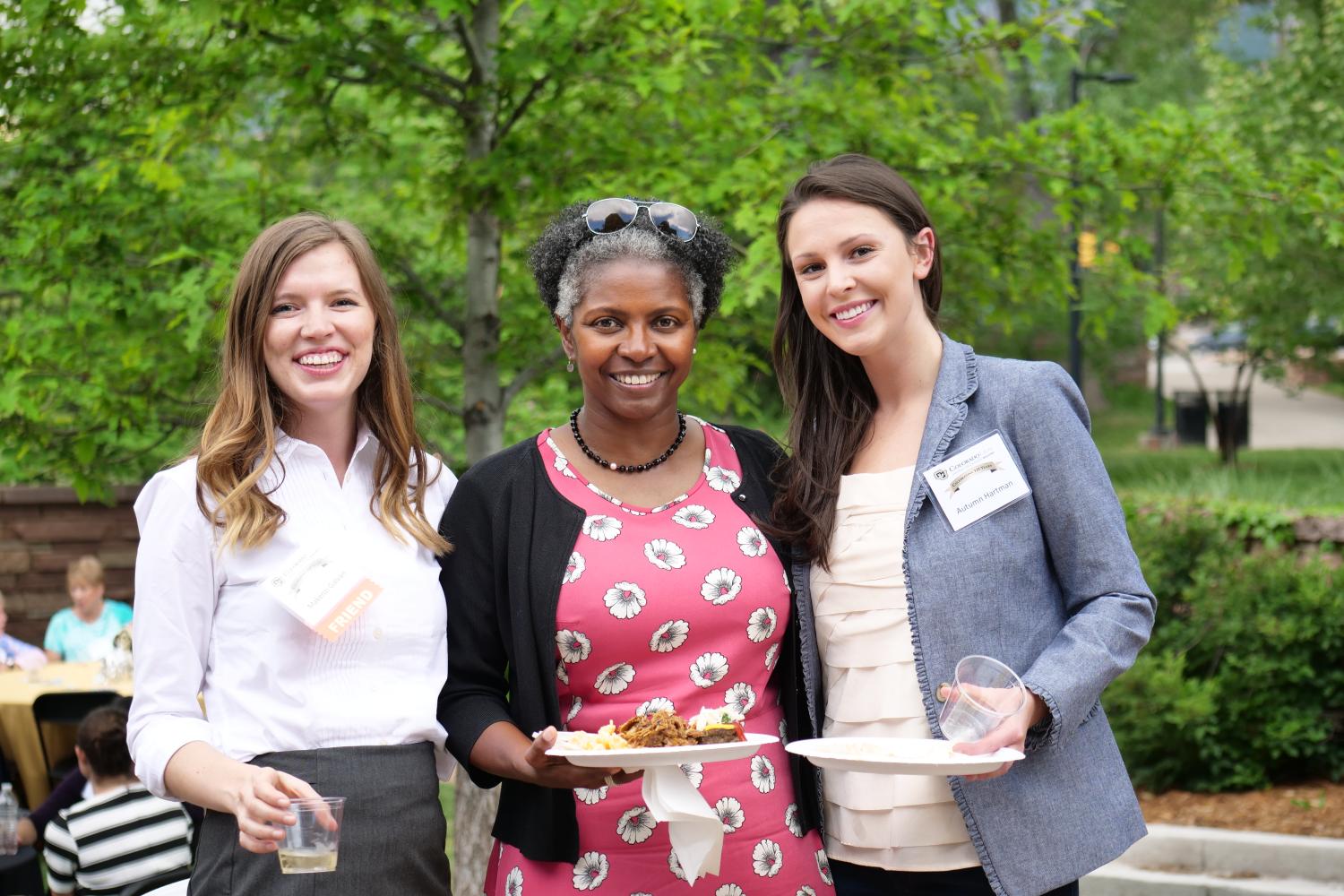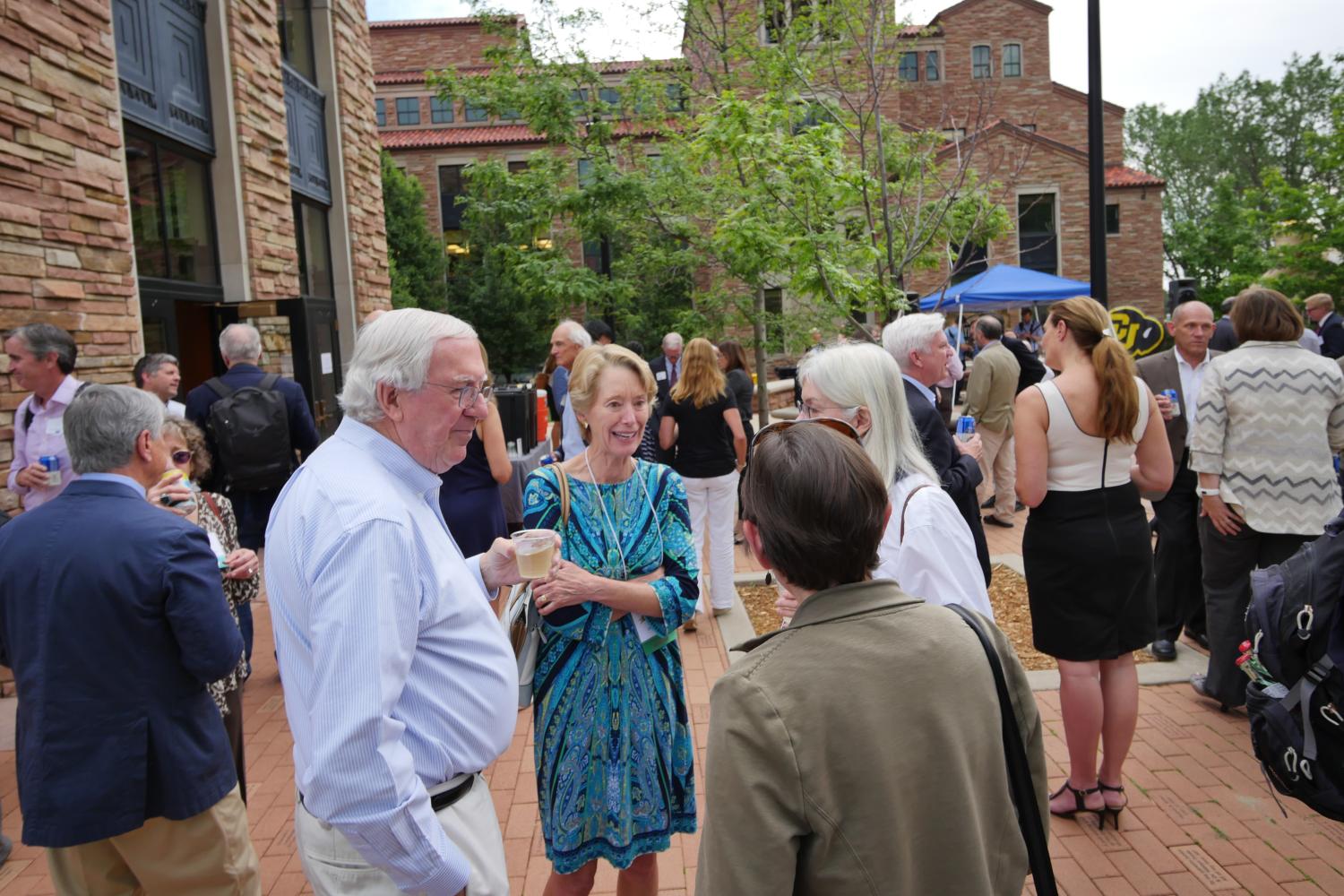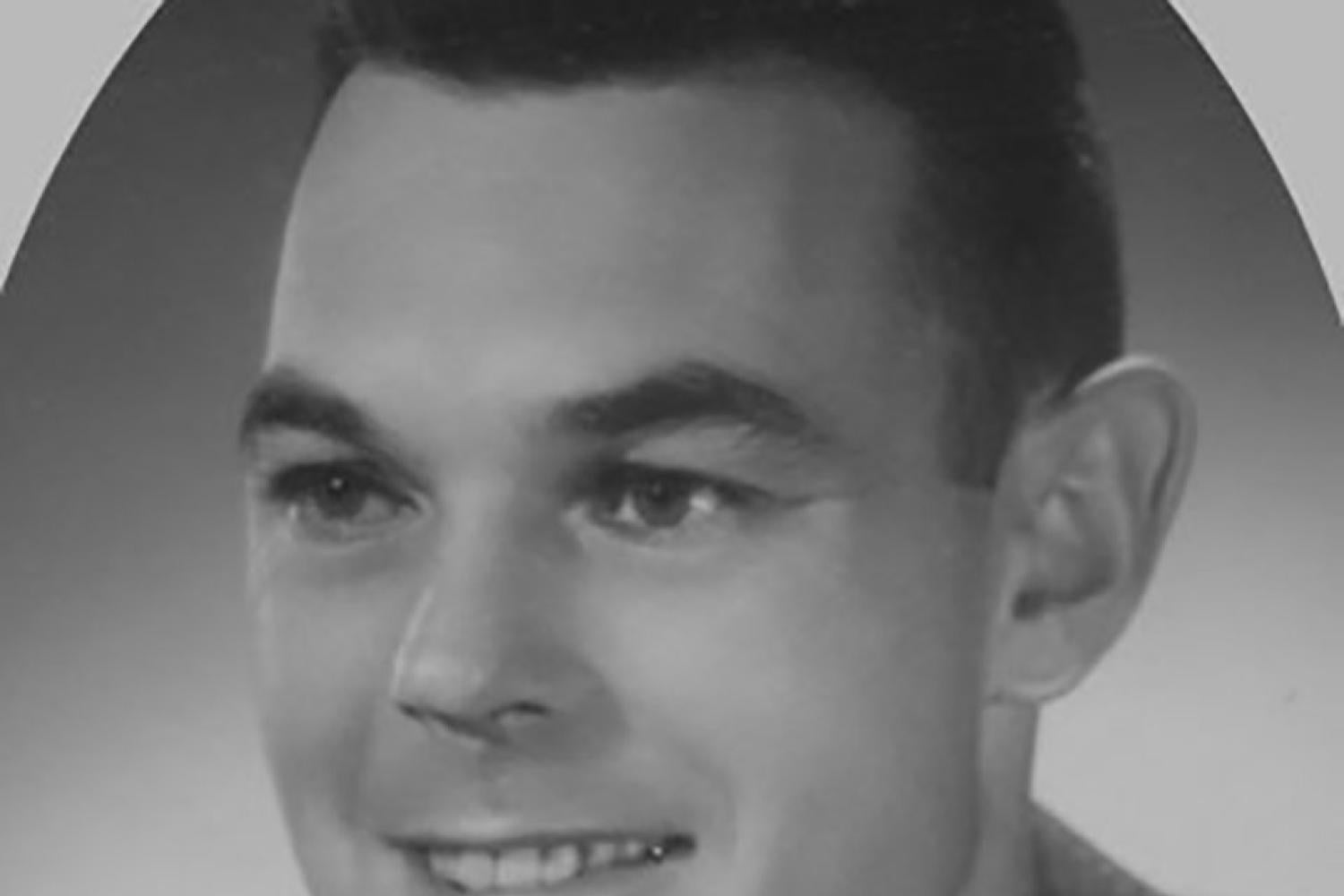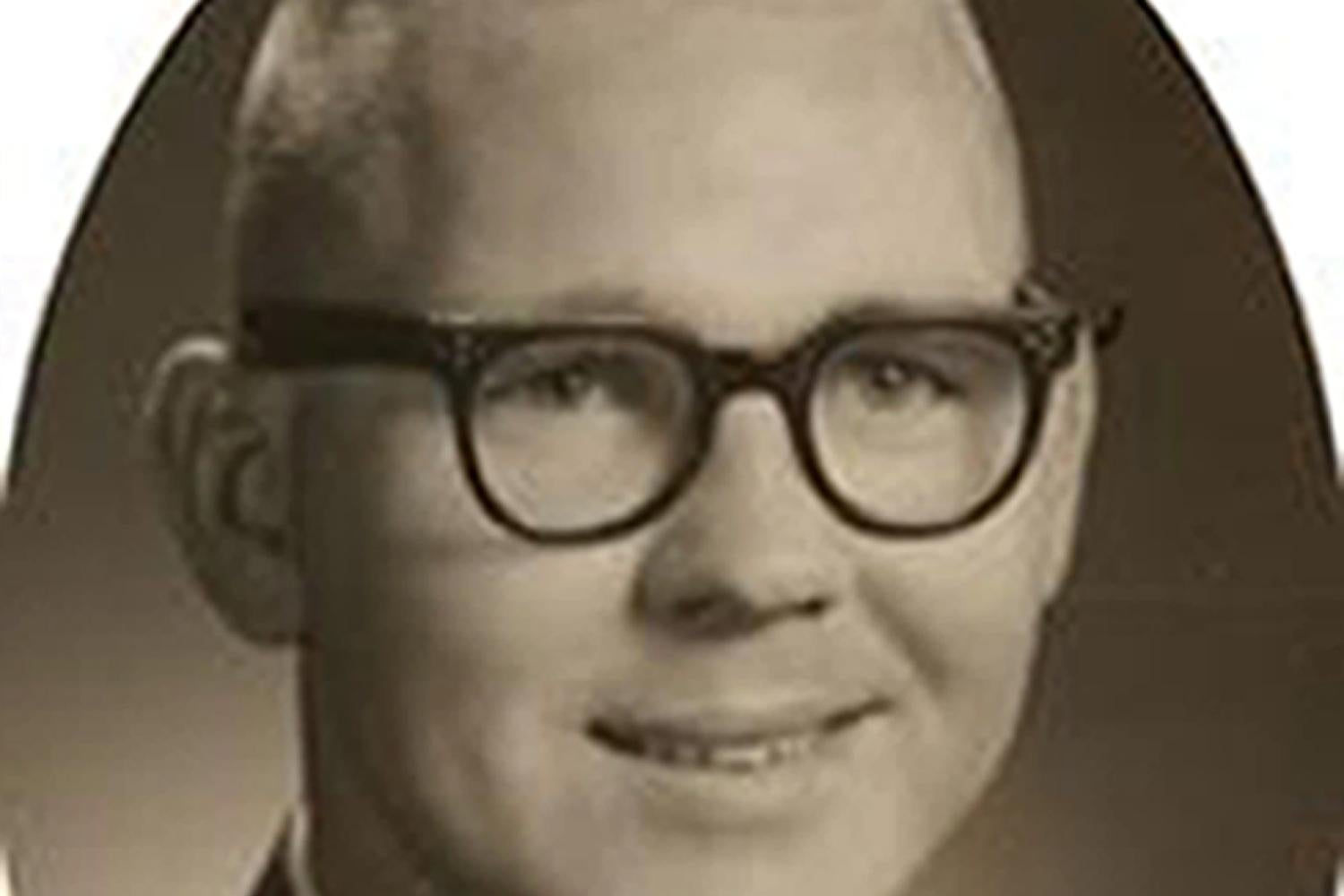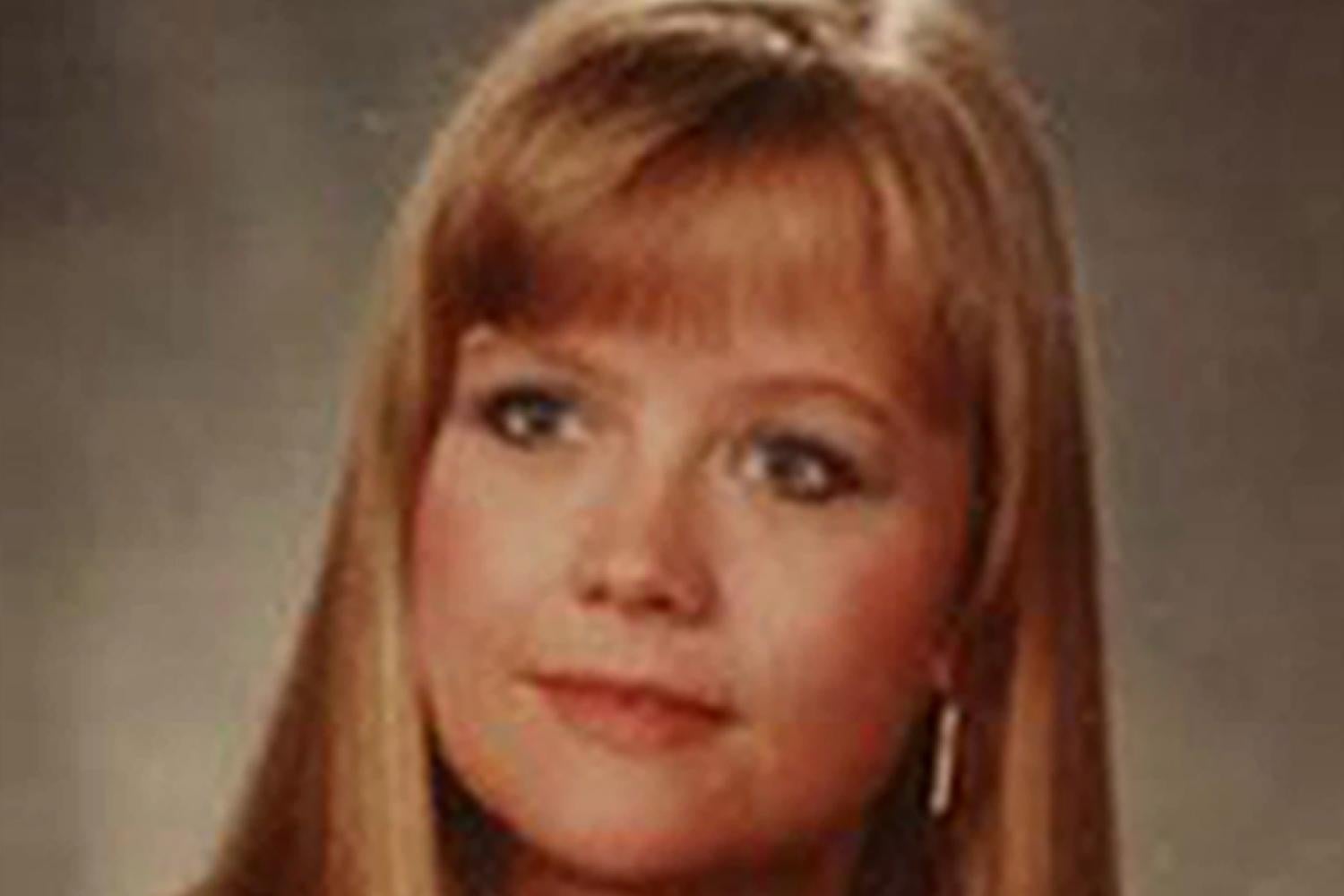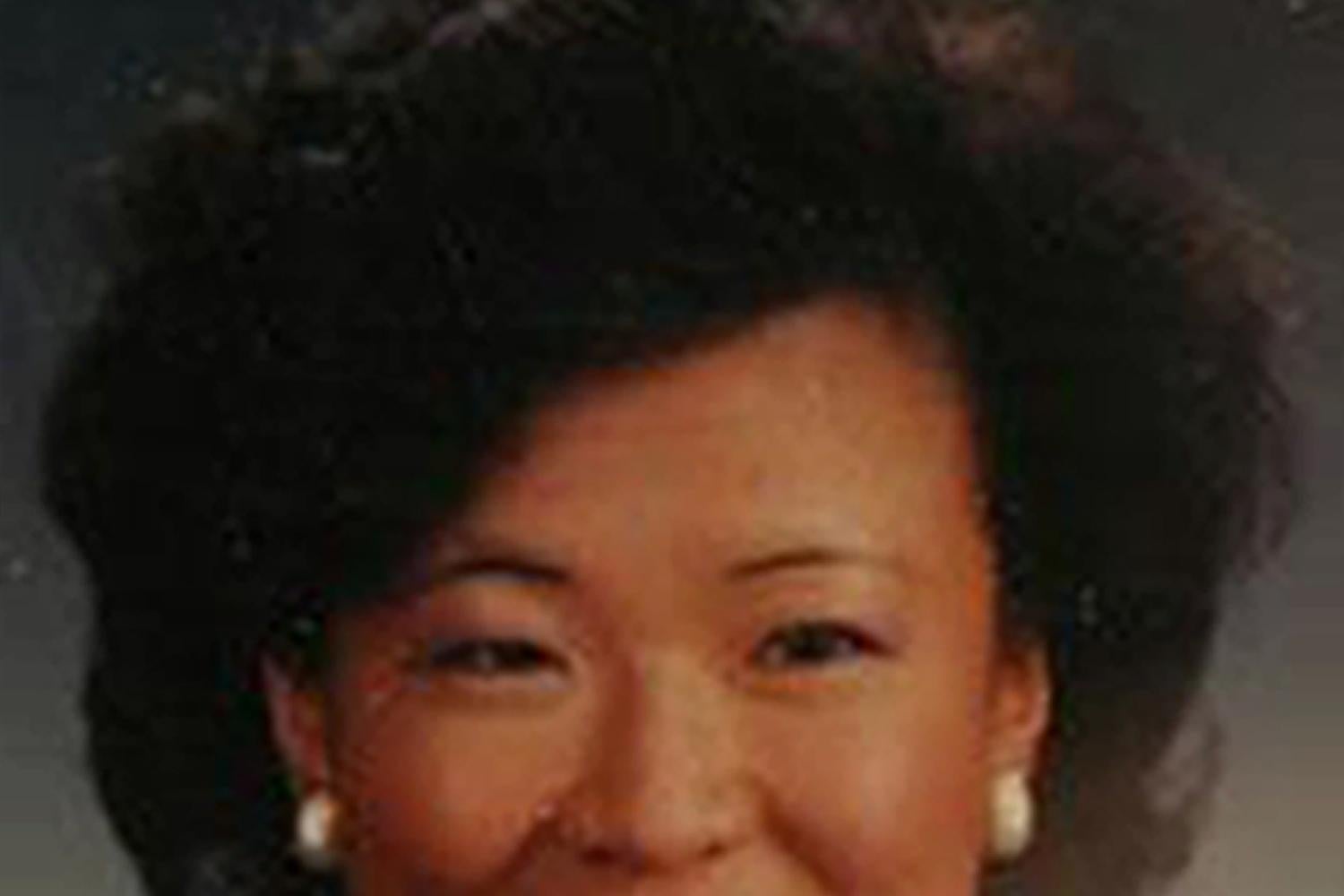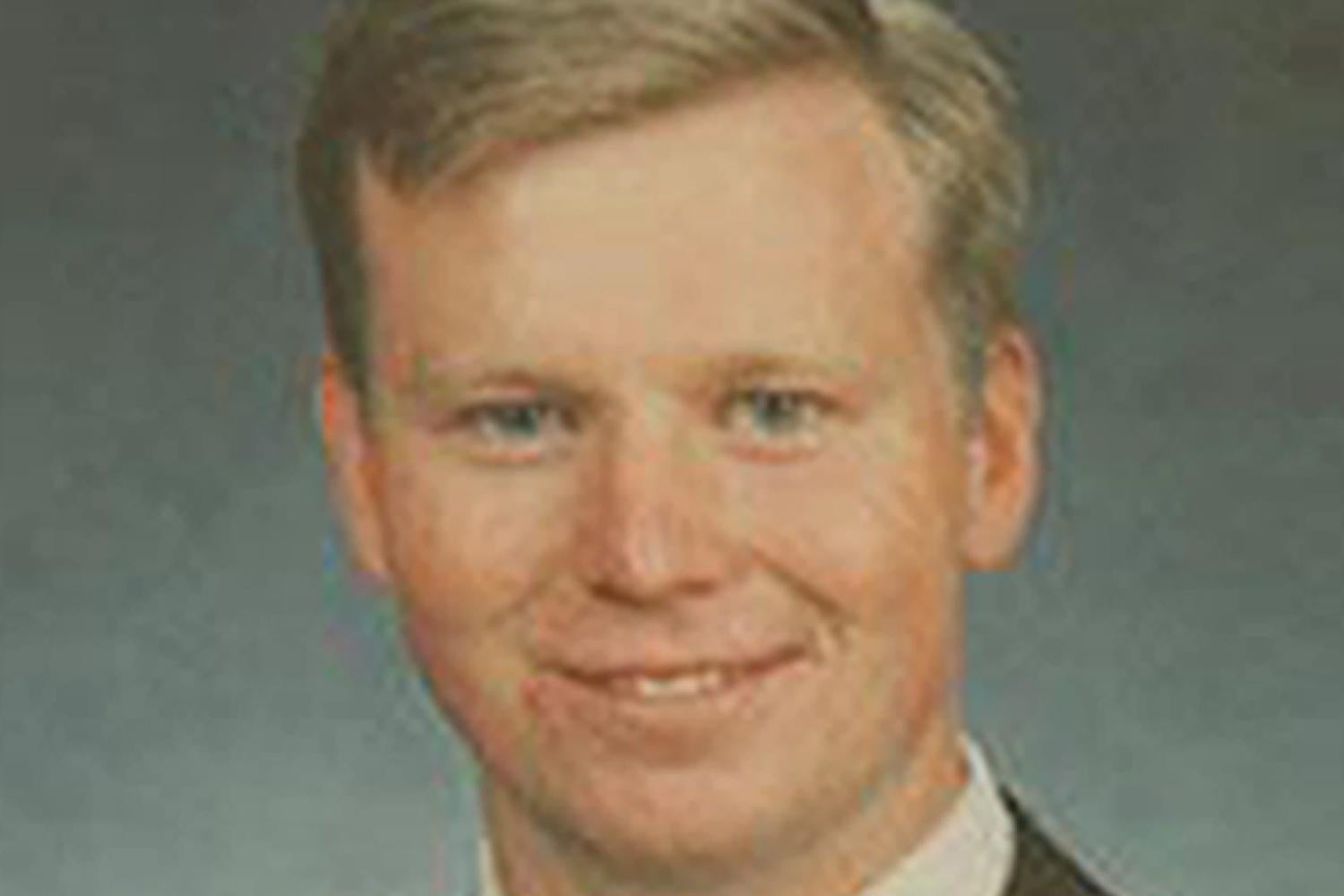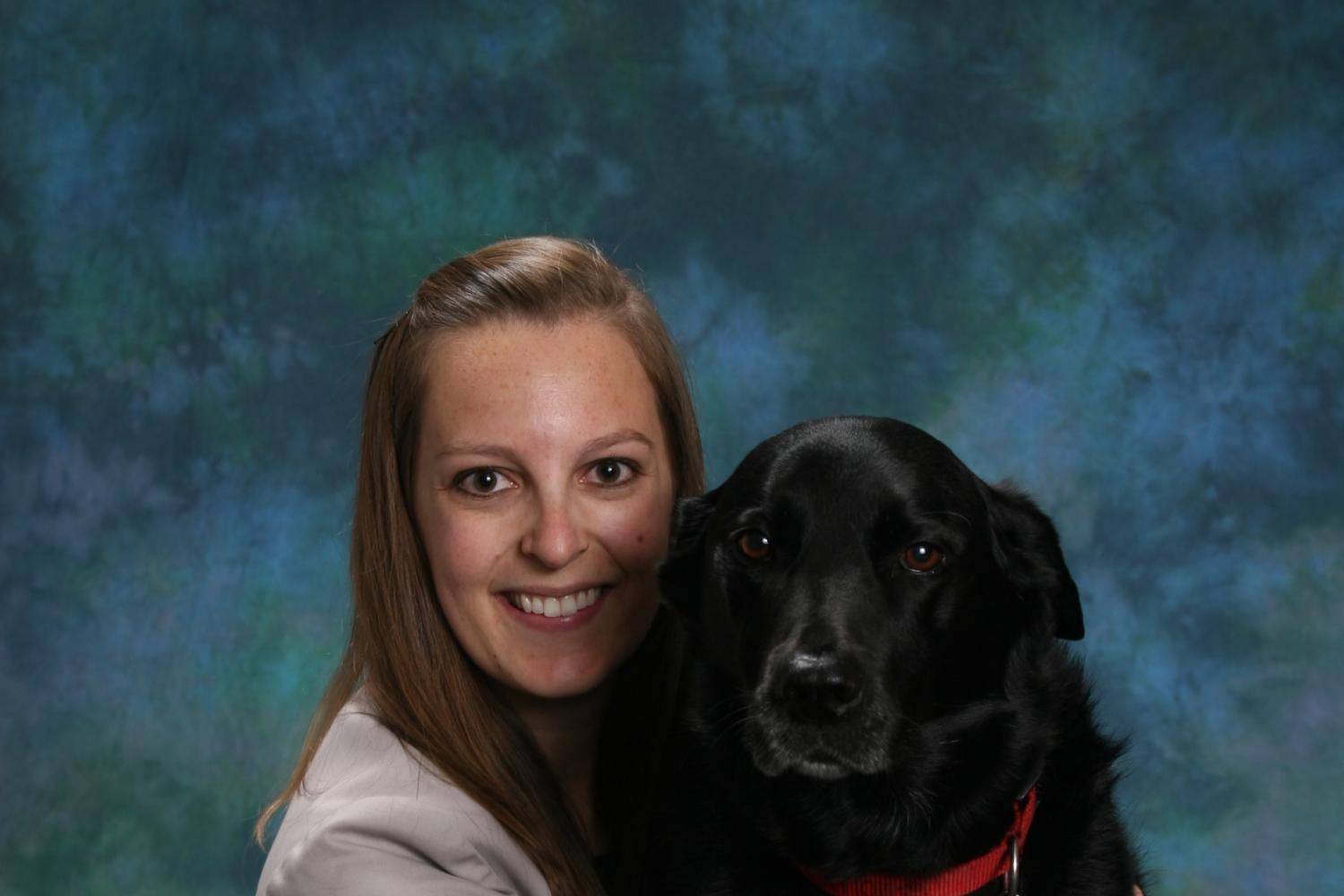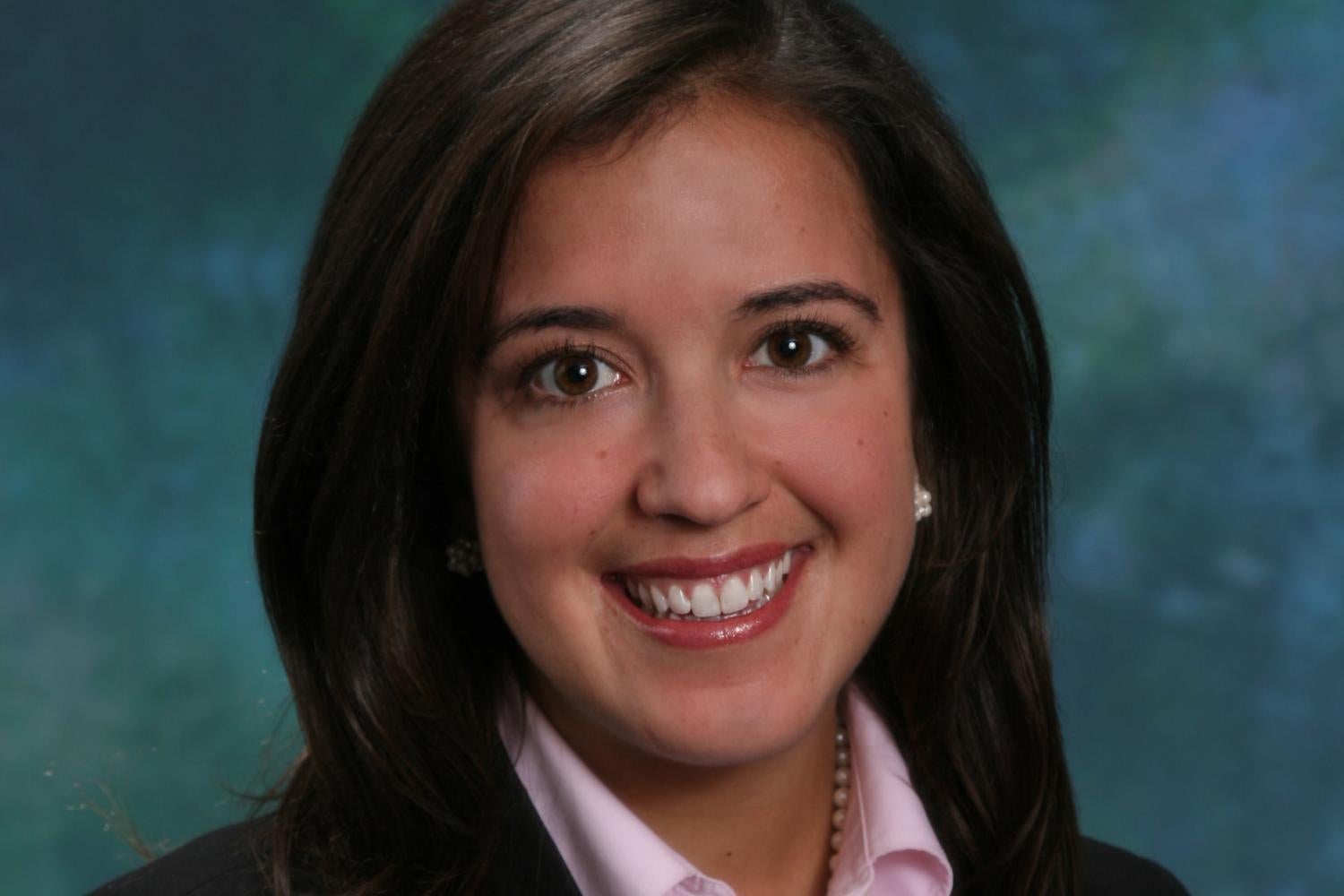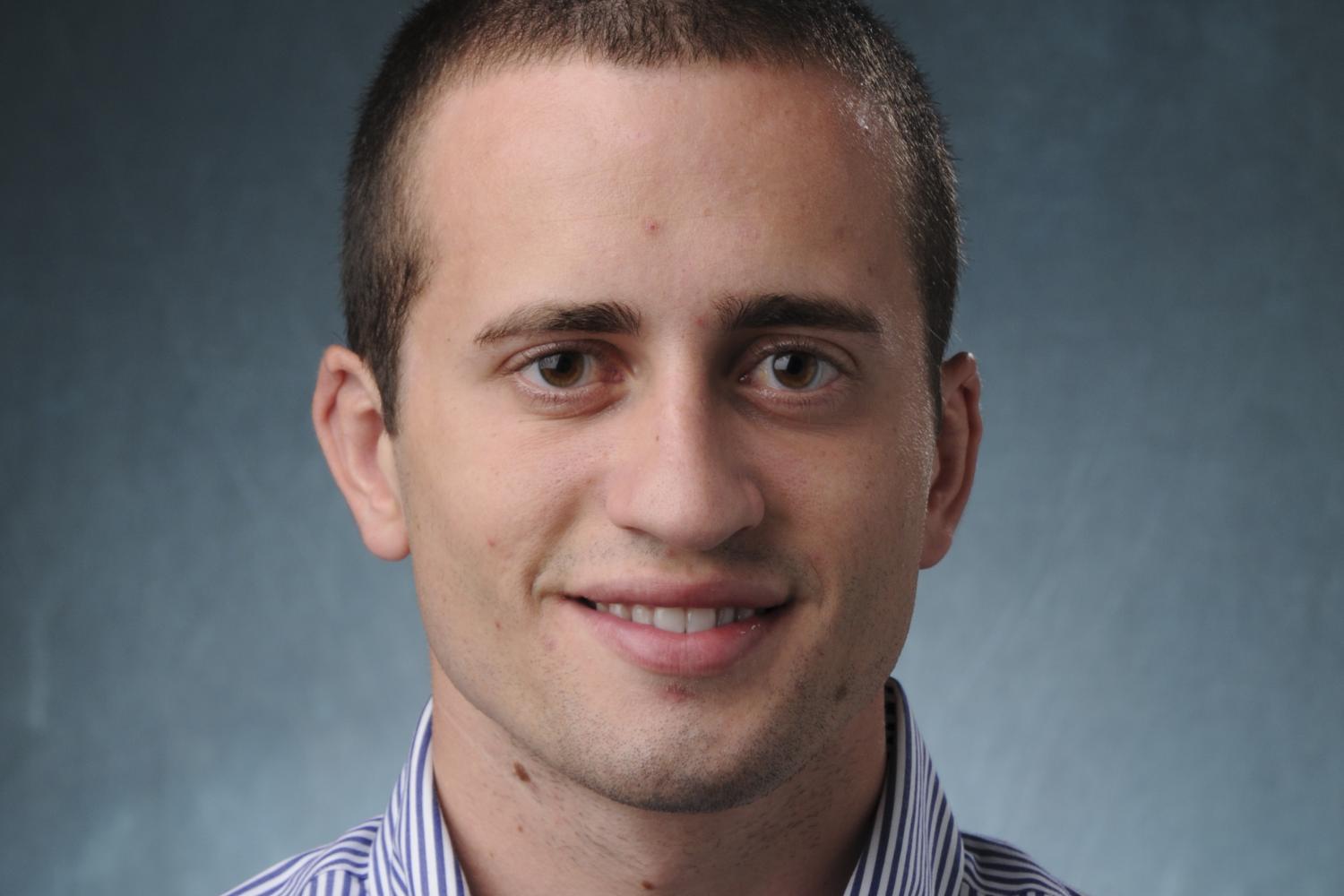125 Years of Colorado Law
In the fall of 1892, the University of Colorado Law School opened its doors in Kent Hall to its first class of 23 law students. Over the last century and a quarter, Colorado Law has occupied five buildings, seen 16 deans, and prepared thousands of graduates for successful legal careers. Today, Colorado Law is an active, vibrant community and is recognized as a national innovator and leader in legal education.
On June 8, 2017, approximately 250 University of Colorado Law School alumni, friends, faculty, and staff gathered outside in the Gilbert Goldstein Courtyard of the Wolf Law Building to celebrate and swap stories of Colorado Law over the last 125 years. Thank you to the Boulder County Bar Association for its generous support of this event.
The event was also attended by CU mascot Chip as well as future generations of Colorado Law students (the children of our students, alumni, faculty, and staff), all highlighted by the song stylings of Mayhem Gulch, featuring Justin Konrad (’06).
Jacki Cooper Melmed (’03), chief legal counsel to Governor John W. Hickenlooper, read aloud the proclamation issued by Governor Hickenlooper declaring June 8, 2017 “125th Anniversary of University of Colorado Law School Day.”
After accepting the proclamation from Cooper Melmed, Dean Jim Anaya welcomed and addressed those gathered. The text of his remarks appears below.
“Good evening and welcome to Colorado Law’s 125th anniversary celebration. I’m Jim Anaya, the 16th dean of this tremendous institution. It is a pleasure to see so many members of our community here to mark this milestone for our great law school.
Before we get back to the celebration, I wanted to take a few moments to reflect on the past and look ahead to the future.
The beginnings of the law school go back to James Baker, the third president of the university. Before his inauguration, President Baker submitted a plan to the regents, requesting the university open a law school.
He envisioned an institution that would rival the best law schools in the country—an idea that must have seemed a bit absurd at the time. In 1892, the entire University of Colorado consisted of 169 students, about a dozen buildings, and some cows and pigs that roamed freely on campus. Baker apparently missed seeing in those cows and pigs the farm to table movement that would eventually set in in Boulder. But he recognized that to have a role in Colorado’s economic and social development, the university must contribute professionals, including lawyers, to the state’s new economy.
The University of Colorado Law School opened in the fall of 1892 with 25 students, 1 full-time faculty member, and Colorado’s first U.S. District Court Judge Moses Hallert as its first dean. Many of the original professors were acquaintances of Dean Hallett and agreed to teach for free. The total operating budget in that first year was $1,500.
Wow, how things have changed!
Just as the new law school was getting started, Colorado was plunged into a depression brought about by the collapse of the silver market. However, the law school continued to flourish and by 1902, the school enrolled 70 students.
There have been a number of times over the years when the future of the law school seemed uncertain. We have endured the near expulsion of the entire student body in 1901 when one of our best-known graduates was accused to have been purposefully mixing up people’s overshoes. Then there was the actual expulsion of the entire class of 1905 over the repeated removal of benches from the law school’s second home in Hale Science building. More seriously, the law school has experienced the changing tides of Colorado’s and the nation’s economy, and the changing nature of the legal profession and accompanying challenges to law schools throughout the country. But in the face of each of the challenges, the law school comes back strong.
When Don Sears became dean in 1968, he laid out a series of necessary changes, including efforts to attract students from all segments of society. Under his deanship, the student body grew from 150 to 350 students and the faculty grew from 9 to 18 members. He made strides in recruiting more students of color and increased the number of women in each graduating class. In the 1970s, the Fleming Law Building was enlarged to accommodate up to 500 law students. During that same period, the law school hired its first female faculty members and made efforts to add diversity to the faculty. In 1981, Colorado Law welcomed Betsy Levin, our first female dean and one of the first female deans in the nation.
The intervening years have brought additional improvements championed by the law school’s leadership and generously supported by our community, including a new home here at the state-of-the-art Wolf Law Building, improvements to our legal writing and clinical offerings, exceptional student services, including a robust career development office, and innovative centers that focus on Colorado Law’s areas of strength.
As we look to the future, we are appreciative of all of those that have had a hand in creating the foundation upon which we continue to build. Specifically, I’d like to extend thanks to my most immediate decanal predecessors, Hal Bruff, David Getches, and Phil Weiser. A warm welcome to Hal Bruff, who has joined us this evening; David’s wife, Ann Getches, who planned to join us this evening; and to Phil Weiser, our next attorney general maybe.
For 125 years, our location in beautiful Boulder has served as a place of inspiration for our faculty and our students. It’s no small wonder that it is home to one of the finest environmental law programs in the world and to perhaps the best Indian law program in the country, reflecting an awareness of the first peoples who inhabited this area and regarded its beauty as sacred.
Reflecting on our location in 1892, President Baker observed:
“Lying at the base of the foothills, where the grays and reds of the rocks, the evergreen growths, the autumn yellows and browns and purples, the low-resting clouds on stormy days, grand and solemn and tragic, made changing pictures, the university is happily located. I have seen, here, the hillsides painted with purple and red, or covered with dark green, lighted here and there with crimson and yellow, and changing under deep shadows. . . . And on some dome or crag I have felt the mind answer to the call of grandeur and beauty and grow into harmony with the scene.”
In establishing a law school at the University of Colorado, President Baker viewed the university, and the law school, as institutions in service to the people of Colorado and viewed higher education as a necessity that should be available to all who could benefit.
Today, 125 years later, we continue to deliver on that vision.
Our faculty are dedicated to first-rate teaching and scholarship and that helps to shape debate. They are thought leaders on the local, national, and international stage and contribute countless hours to the legal community.
In 1894, it was reported to the regents that “[t]he law students are among the hardest workers of the University.” That report is true today as our students admirably balance their studies with work, family, and public service.
Our alumni work in government, public service, and diverse types and areas of legal practice and in industry. Echoing Dean Gene Nichol on the occasion of our centennial celebration, one of “our greatest sources of pride are the quality and the humanity of the generations of lawyers who have passed through these halls.”
Our community continues to find ways to pay forward the benefits that they have received, assisting our students and supporting our programs in numerous ways.
And so, how do we continue this tradition?
Your presence here tonight to celebrate with us is testament to the strength of this incredible Colorado Law community. To help us continue the tradition of excellence that has developed and endured for the last 125 years, I encourage you to do a few things:
- Learn about and support Colorado Law programs like our Leaders in Law and Community (LILAC) fellowship program, which this fall will welcome its first seven fellows with full tuition scholarships, making the benefits of a legal education available to students from backgrounds underrepresented in law schools and in the legal profession.
- Continue to engage with Colorado Law. We offer a number of opportunities to participate in this community throughout the year and many opportunities for service.
- Support our students by providing internship opportunities, post-graduate employment, or scholarship support.
Thank you all so much for being here this evening, and thank you for the warm welcome you have given me in this first year of my deanship. It has been a great privilege to become part of the Colorado Law community and lead this great institution. I look forward to continuing with all of you in the path of remarkable progress and achievement that is Colorado Law. Please enjoy the rest of the evening.”
Spring 2017 Amicus
The spring 2017 issue of Amicus celebrates Colorado Law's 125th anniversary. Read the issue here.
In the issue, we reprinted a portion of an article originally published in the Denver Bar Association magazine, Dicta, in 1959. Read the full article here.
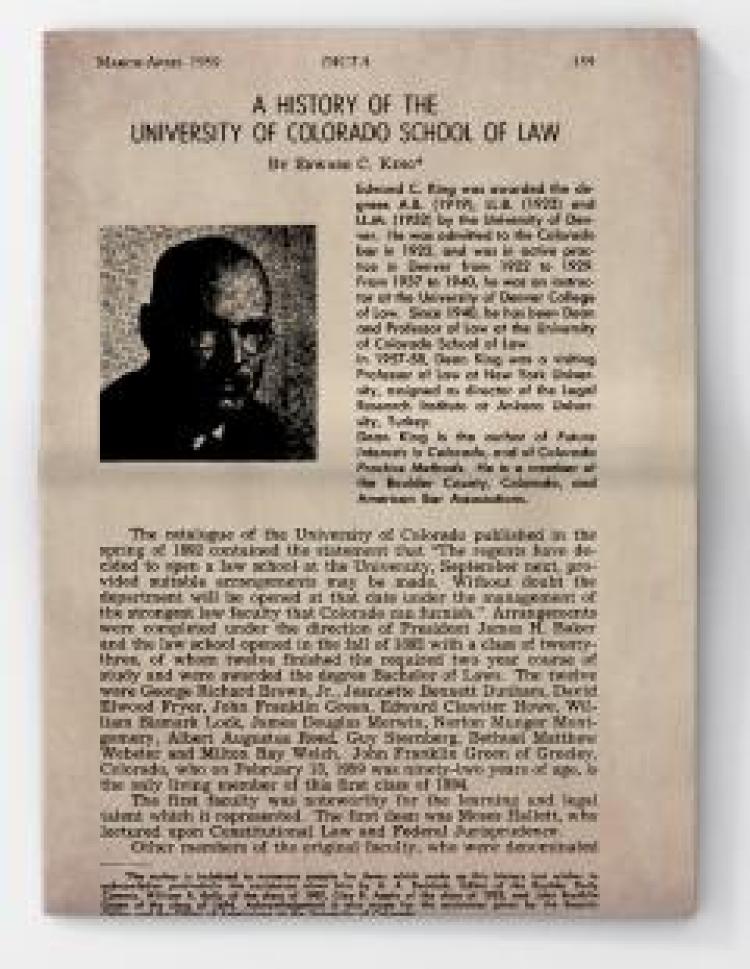
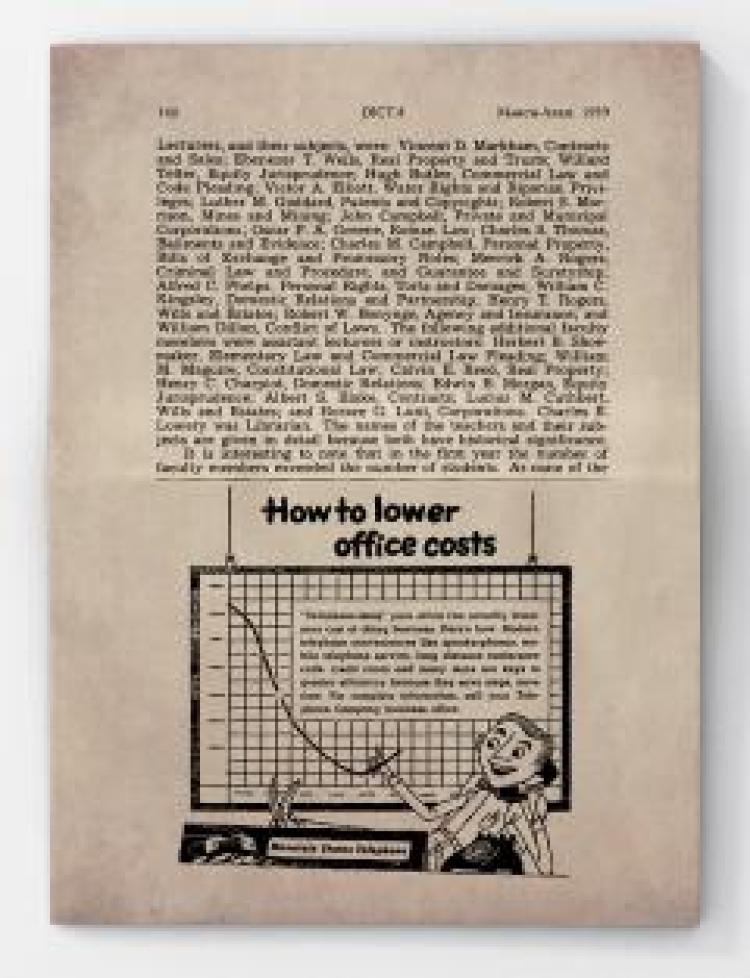
Reprinted with permission from the Denver Bar Association.



